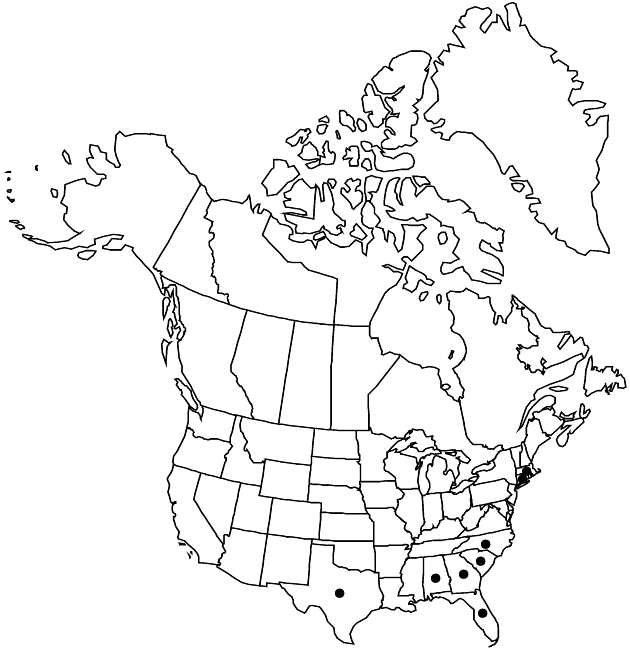Difference between revisions of "Ageratum houstonianum"
Gard. Dict. ed. 8, Ageratum no. 2. 1768.
FNA>Volume Importer |
FNA>Volume Importer |
||
| Line 27: | Line 27: | ||
|elevation=0–20 m | |elevation=0–20 m | ||
|distribution=Ala.;Conn.;Fla.;Ga.;Mass.;N.C.;S.C.;Tex.;Mexico;Central America;introduced;Pacific Islands (Hawaii). | |distribution=Ala.;Conn.;Fla.;Ga.;Mass.;N.C.;S.C.;Tex.;Mexico;Central America;introduced;Pacific Islands (Hawaii). | ||
| − | |discussion=<p>Ageratum houstonianum is apparently native to southeastern Mexico and Central America; the North American plants are escapes and naturalized from cultivars. M. F. Johnson (1971) observed that forma isochroum (B. L. Robinson) M. F. Johnson (type from the state of Veracruz, Mexico) sometimes may be nearly eglandular.</p> | + | |discussion=<p><i>Ageratum houstonianum</i> is apparently native to southeastern Mexico and Central America; the North American plants are escapes and naturalized from cultivars. M. F. Johnson (1971) observed that forma isochroum (B. L. Robinson) M. F. Johnson (type from the state of Veracruz, Mexico) sometimes may be nearly eglandular.</p> |
|tables= | |tables= | ||
|references= | |references= | ||
| Line 52: | Line 52: | ||
|publication year=1768 | |publication year=1768 | ||
|special status= | |special status= | ||
| − | |source xml=https://jpend@bitbucket.org/aafc-mbb/fna-data-curation.git/src/ | + | |source xml=https://jpend@bitbucket.org/aafc-mbb/fna-data-curation.git/src/8f726806613d60c220dc4493de13607dd3150896/coarse_grained_fna_xml/V19-20-21/V21_1213.xml |
|tribe=Asteraceae tribe Eupatorieae | |tribe=Asteraceae tribe Eupatorieae | ||
|genus=Ageratum | |genus=Ageratum | ||
Revision as of 16:30, 18 September 2019
Annuals, 30–80 cm (fibrous-rooted). Stems erect to decumbent, sparsely to densely pilose. Leaf blades deltate to ovate, mostly 3–8 × 2.5–4 cm, margins toothed, abaxial faces sparsely to densely pilose, not evidently gland-dotted. Peduncles viscid-puberulent, pilose, and stipitate-glandular. Involucres ca. 4 × 5–6 mm. Phyllaries narrowly lanceolate (0.6–1 mm wide), stipitate-glandular, sparsely to densely pilose, eciliate or inconspicuously ciliate, tips gradually tapering, indurate-subulate, 0.8–2 mm. Corollas usually lavender, rarely white. Cypselae sparsely strigoso-hispidulous; pappi of 5 distinct, oblong scales 2–3 mm. 2n = 20.
Phenology: Flowering Jun–Aug.
Habitat: Disturbed sites, mostly coastal
Elevation: 0–20 m
Distribution

Ala., Conn., Fla., Ga., Mass., N.C., S.C., Tex., Mexico, Central America, introduced, Pacific Islands (Hawaii).
Discussion
Ageratum houstonianum is apparently native to southeastern Mexico and Central America; the North American plants are escapes and naturalized from cultivars. M. F. Johnson (1971) observed that forma isochroum (B. L. Robinson) M. F. Johnson (type from the state of Veracruz, Mexico) sometimes may be nearly eglandular.
Selected References
None.